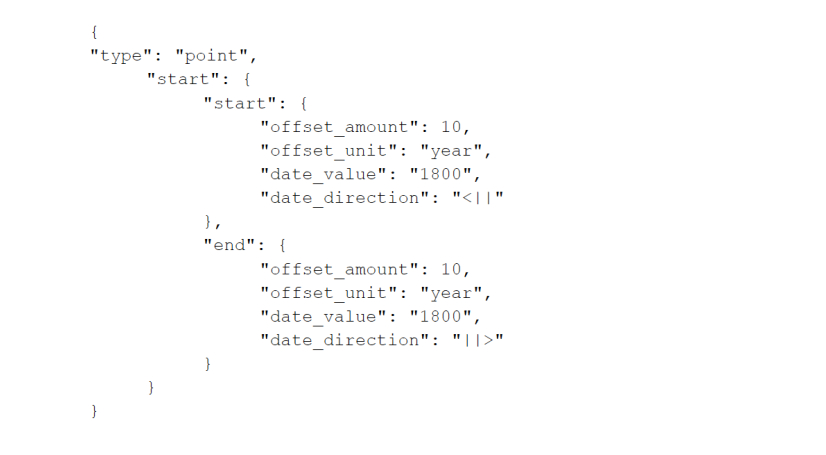Pim van Bree and Geert Kessels
Place and Time: Friday, 02.07., 14:40–15:00, Room 1
Session: Software Demos
Keywords: Time; chronology; uncertainty; vagueness; data; visualisation
The open-source software nodegoat (https://nodegoat.net/) is a research environment that allows scholars to create, analyse, and visualise datasets that are temporally and spatially attributed. Due to its focus on time, space, and relationality nodegoat is used by many scholars for historical network research projects.[1]
nodegoat has been expanded with a ‚Chronology Statements‘ functionality to allow for vague and relational date statements. Our paper demonstrates how this works and how it can be used for historical network research purposes.
In database software date statements have to be precise and complete. To store incomplete and imprecise dates the EDTF format (ISO 8601-2:2019) has been developed.[2] Although EDTF is a step in the right direction, the format is less suitable for historical research as it lacks options for relational date statements (e.g. ‚X happened 10 weeks before Y‘) and it is not open for self-defined cycles (‚X happened during the „Sommersemester“ of 1766‘).
nodegoat already provided the functionality to store incomplete dates or periods (e.g. ‚7-1788‘, or ‚1656 – 8-1657‘). By using the new Chronology Statements functionality a scholar can now make imprecise date statements in which the level of imprecision is defined by the scholar. The self defined imprecision quantifies the vagueness of the date and makes the statement suitable for computation. This approach, in contrast to qualitative statements like ‚circa‘ or ‚around‘ and the EDTF qualification characters ‚?‘, ‚~‘, ‚%‘, produces date statements that can be used for filtering, analysis, and visualisation purposes.
The self-defined imprecision works as follows: instead of stating ‚around 1800‘, a scholar makes a Chronology Statement that reads as ‚the date point is between 10 years before the begin of 1800 and 10 years after the end of 1800‘. In the nodegoat interface, the form to input this statement looks like:
Chronology Statements can both be expressed by scholars and understood by computation. To compute this statement it is translated into JSON, for which the ChronoJSON format has been developed:
The offset amount, the offset value, and the operators can be defined by the scholar. Chronology Statements can also be applied to periods with two, three, or four single statements.
To store relational dates, the date value can be replaced by a reference to a Chronology Statement stored in another object. Unimodal relational dating can be used to position an object of a type in relation to one or more objects of the same type, e.g. ‚letter X was sent after letter Y and before letter Z‘. Multimodal relational dating can be used to position an object of a type in relation to one or more objects of another type, e.g. ‚event X was held after the begin of the reign of emperor Y and before the death of person Z‘.[3]
Reoccurring time spans can be stored as ‚Cycles‘. These cycles (e.g. ‚winter‘, ‚Sommer Semester‘) can be used in a Chronology Statement to state that a person lived in a city between the end of the summer of 1848 and the beginning of spring of 1854 (i.e. from 21-09-1848 until 20-03- 1854).[4]
The operators that are applied within the statements are similar to Allen operators and are in line with the computational efficiency of, for instance, temporal relational primitives.[5]
References
[1] Ingeborg van Vugt, ‚Using Multi-Layered Networks to Disclose Books in the Republic of Letters‘, Journal of Historical Network Research 1 (2017) 25-51. Toby Burrows, ‚The History and Provenance of Manuscripts in the Collection of Sir Thomas Phillipps: New Approaches to Digital Representation‘, Speculum 92 (2017) 39-64. D’haeninck, Thomas, Randeraad Nico, and Christophe Verbruggen, ‚Visualizing Longitudinal Data: Rooted Cosmopolitans in the Low Countries, 1850- 1914.‘ CEUR Workshop Proceedings. Ed. Serge Ter Braake et al. Vol. 1399. Aachen: CEUR WS, 2015. 116–121. For more examples see: zotero.org/lab1100/tags/nodegoat.
[2] https://www.loc.gov/standards/datetime/
[3] https://nodegoat.net/guides/relationalchronologystatements
[4] https://nodegoat.net/guides/cycles
[5] J.F. Allen, ‚Maintaining knowledge about temporal intervals‘, Communication of ACM (1983) 832-843, http://www.cidoc-crm.org/sites/default/files/CIDOC%20CRM_v6.2.7_Definition_esIP.pdf, Papadakis, Emmanuel and Martin Doerr. “Temporal Primitives, an Alternative to Allen Operators.” EMF-CRM@TPDL (2015).

